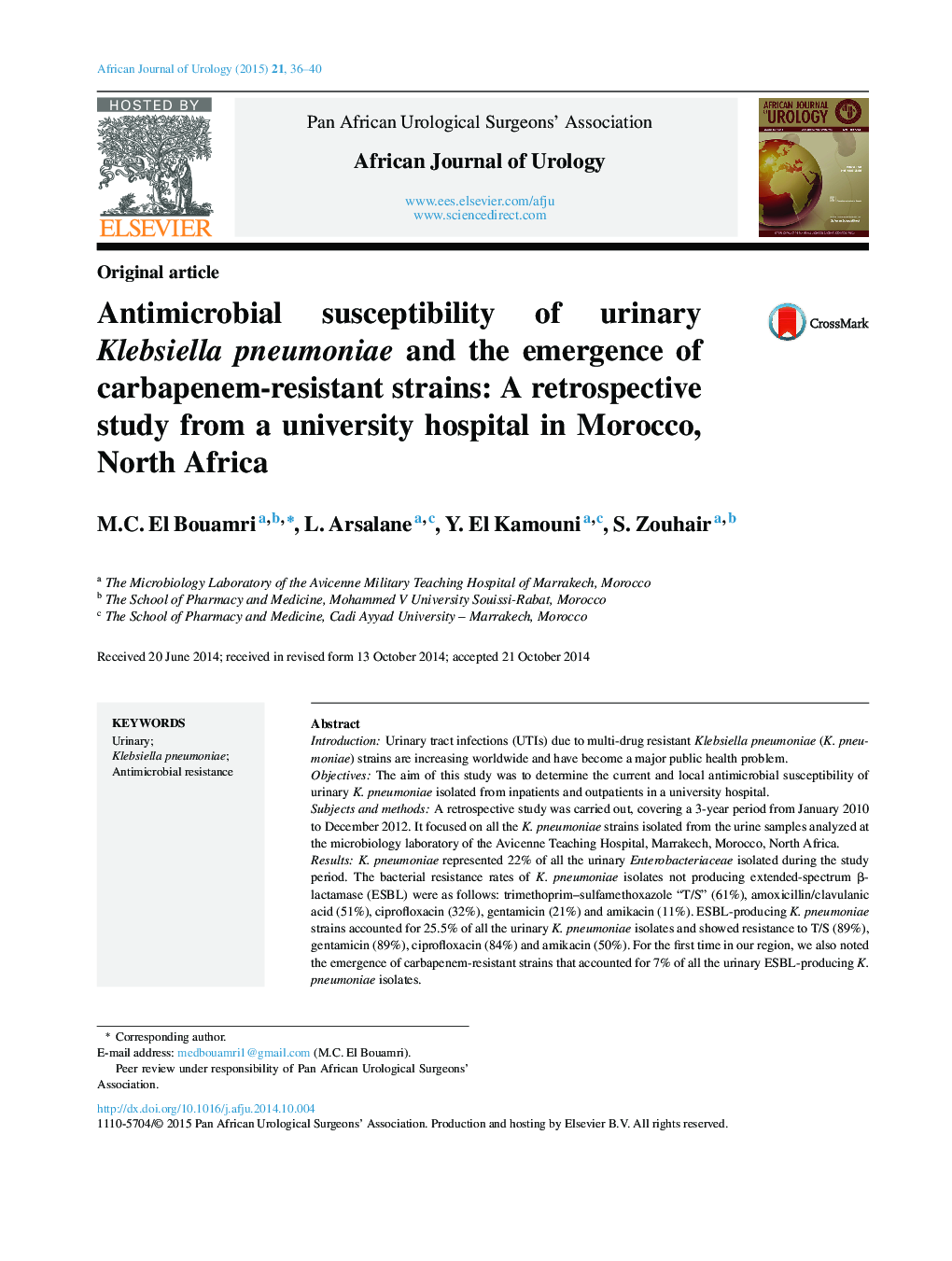| Article ID | Journal | Published Year | Pages | File Type |
|---|---|---|---|---|
| 4267563 | African Journal of Urology | 2015 | 5 Pages |
IntroductionUrinary tract infections (UTIs) due to multi-drug resistant Klebsiella pneumoniae (K. pneumoniae) strains are increasing worldwide and have become a major public health problem.ObjectivesThe aim of this study was to determine the current and local antimicrobial susceptibility of urinary K. pneumoniae isolated from inpatients and outpatients in a university hospital.Subjects and methodsA retrospective study was carried out, covering a 3-year period from January 2010 to December 2012. It focused on all the K. pneumoniae strains isolated from the urine samples analyzed at the microbiology laboratory of the Avicenne Teaching Hospital, Marrakech, Morocco, North Africa.ResultsK. pneumoniae represented 22% of all the urinary Enterobacteriaceae isolated during the study period. The bacterial resistance rates of K. pneumoniae isolates not producing extended-spectrum β-lactamase (ESBL) were as follows: trimethoprim–sulfamethoxazole “T/S” (61%), amoxicillin/clavulanic acid (51%), ciprofloxacin (32%), gentamicin (21%) and amikacin (11%). ESBL-producing K. pneumoniae strains accounted for 25.5% of all the urinary K. pneumoniae isolates and showed resistance to T/S (89%), gentamicin (89%), ciprofloxacin (84%) and amikacin (50%). For the first time in our region, we also noted the emergence of carbapenem-resistant strains that accounted for 7% of all the urinary ESBL-producing K. pneumoniae isolates.ConclusionsAntimicrobial susceptibility testing of urinary K. pneumoniae isolates showed a significantly high resistance to commonly used antimicrobial agents. These data highlight the need for regular surveillance of microbial resistance to improve infection control and guide the use of antimicrobial agents.
